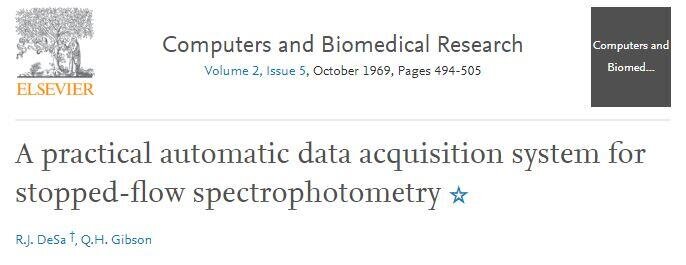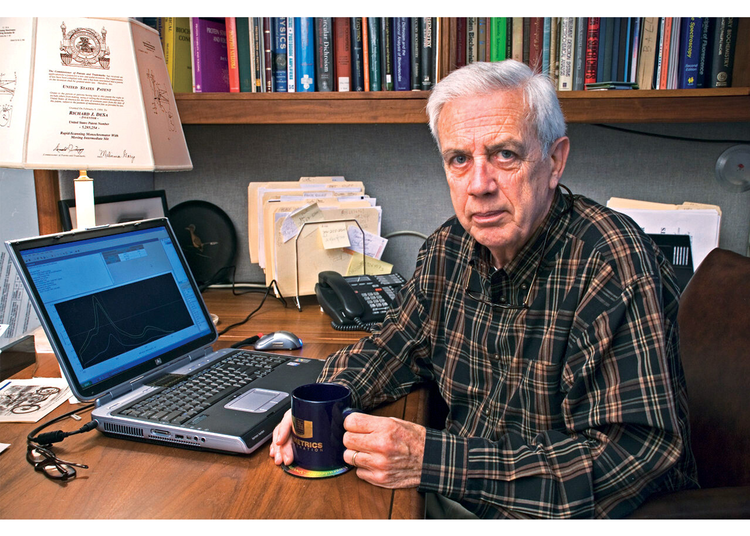A Biased View of Uv/vis/nir
Wiki Article
Uv/vis/nir Things To Know Before You Buy
Table of ContentsFascination About Circular DichroismUnknown Facts About Circularly Polarized LuminescenceAn Unbiased View of SpectrophotometersFacts About Circular Dichroism RevealedUv/vis Fundamentals Explained

Spectrophotometry is a tool that hinges on the quantitative analysis of particles depending on how much light is taken in by colored substances.
Not known Details About Circular Dichroism
A spectrophotometer is typically used for the measurement of transmittance or reflectance of options, transparent or nontransparent solids, such as polished glass, or gases. Although numerous biochemicals are colored, as in, they absorb noticeable light and for that reason can be measured by colorimetric procedures, even colorless biochemicals can frequently be transformed to colored compounds appropriate for chromogenic color-forming reactions to yield compounds suitable for colorimetric analysis.: 65 However, they can also be created to measure the diffusivity on any of the listed light ranges that usually cover around 2002500 nm utilizing various controls and calibrations.An example of an experiment in which spectrophotometry is used is the decision of the equilibrium constant of an option. A certain chain reaction within a solution might occur in a forward and reverse direction, where reactants form items and items break down into reactants. At some point, this chain reaction will reach a point of balance called an equilibrium point.
Circularly Polarized Luminescence for Beginners
The amount of light that goes through the service is indicative of the concentration of specific chemicals that do not permit light to travel through. The absorption of light is because of the interaction of light with the electronic and vibrational modes of molecules. Each type of particle has a specific set of energy levels related to the makeup of its chemical bonds and nuclei and therefore will absorb light of particular wavelengths, or energies, leading to unique spectral residential or commercial properties.
They are extensively used in numerous industries consisting of semiconductors, laser and optical manufacturing, printing and forensic assessment, as well as in laboratories for the study of chemical compounds. Spectrophotometry is frequently used in measurements of enzyme activities, determinations of protein concentrations, decisions of enzymatic kinetic constants, and measurements of ligand binding reactions.: 65 Eventually, a spectrophotometer is able to figure out, depending on the control or calibration, what compounds are present in a target and exactly how much through estimations of observed wavelengths.
Invented by Arnold O. Beckman in 1940 [], the spectrophotometer was produced with the aid of his colleagues at his business National Technical Laboratories established in 1935 which would become Beckman Instrument Company and ultimately Beckman Coulter. This would come as a solution to the formerly produced spectrophotometers which were unable to soak up the ultraviolet correctly.
The Ultimate Guide To Uv/vis
It would be found that this did not offer satisfactory results, therefore in Model B, there was a shift from a glass to a quartz prism which allowed for better absorbance results - circularly polarized luminescence (https://hubpages.com/@olisclarity1). From there, Model C was born with an adjustment to the wavelength resolution which ended up having three units of it producedIt irradiates the sample with polychromatic light which the sample takes in depending upon its residential or commercial properties. It is sent back by grating the photodiode selection which finds the wavelength region of the spectrum. Ever since, the development and application of spectrophotometry devices has increased exceptionally and has turned into one of the most innovative instruments of our time.

The 5-Minute Rule for Circularly Polarized Luminescence
The grating can either be movable or fixed.In such systems, the grating is fixed and the intensity of each wavelength of light is measured by a different detector in the array. When making transmission measurements, the spectrophotometer quantitatively compares the fraction of light that passes through a referral option and a test option, then electronically compares a knockout post the strengths of the two signals and computes the percentage of transmission of the sample compared to the reference standard.

Report this wiki page